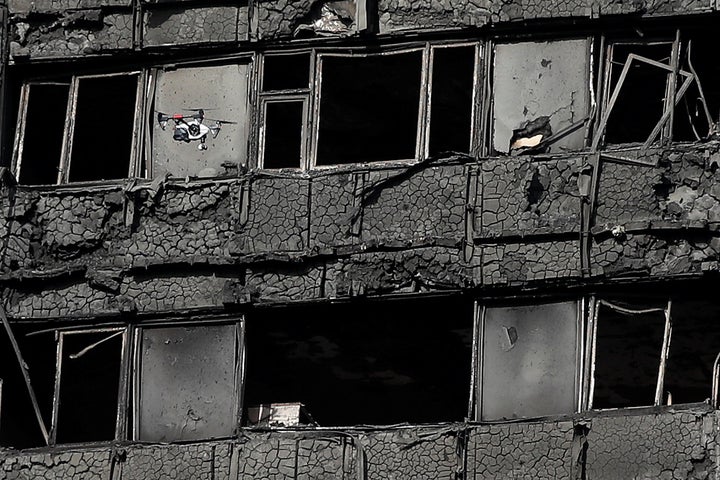Real-life fires could burn 100C hotter than those simulated in cladding safety tests, investigators have found.
Current testing methods for building materials are not reproducing actual conditions and are in need of “urgent review”, the Fire Protection Association has warned.
Experiments comparing test conditions with more realistic ones found that building fires could burn at least 100C hotter, spread faster and last longer than those in safety checks.
In one study the flames were still increasing when they had to be extinguished because they had exceeded lab safety conditions.
It comes after a previous investigation on a door from Grenfell Tower discovered it could only withstand a blaze for 15 minutes – not the 30 for which it was designed.
Jonathan O’Neill, managing director of the Fire Protection Association, said: “The results of this important research confirm long-held concerns by many in the fire sector that the current cladding test standard requires urgent review to ensure that systems that pass are reflective of the systems that are installed and of the risks to which they are exposed.”

The research found that factors overlooked in testing included:
- Test fires are only made up of wood. In modern blazes, around 20% of the materials involved are plastic;
- Cladding materials are sometimes tested as a sealed unit, whereas when fitted on a building they often include gaps, and cover a far more extensive area;
- Materials are tested in manufacturer condition, but during their actual use will often be pierced by things such as vents or ducts.
The research, commissioned by the Association of British Insurers (ABI), has been provided to the Dame Judith Hackitt review into building regulations and fire safety, established in the wake of the Grenfell blaze.
Huw Evans, director general of the ABI, said: “Dame Judith Hackitt’s important work post-Grenfell has already recognised the building control system is broken.
“This latest research is yet more evidence that fundamental reform is needed to keep our homes and commercial premises safe from fire.
“It is a matter of urgency that we create the right testing regime that properly replicates real-world conditions and keeps pace with building innovation and modern design.”
A spokesman for the Ministry of Housing, Communities and Local Government said: “We are committed to constantly improving safety standards.
“We work closely with the British Standards Institution and they stand ready to present these findings to their expert technical committee who will review this accordingly.”
